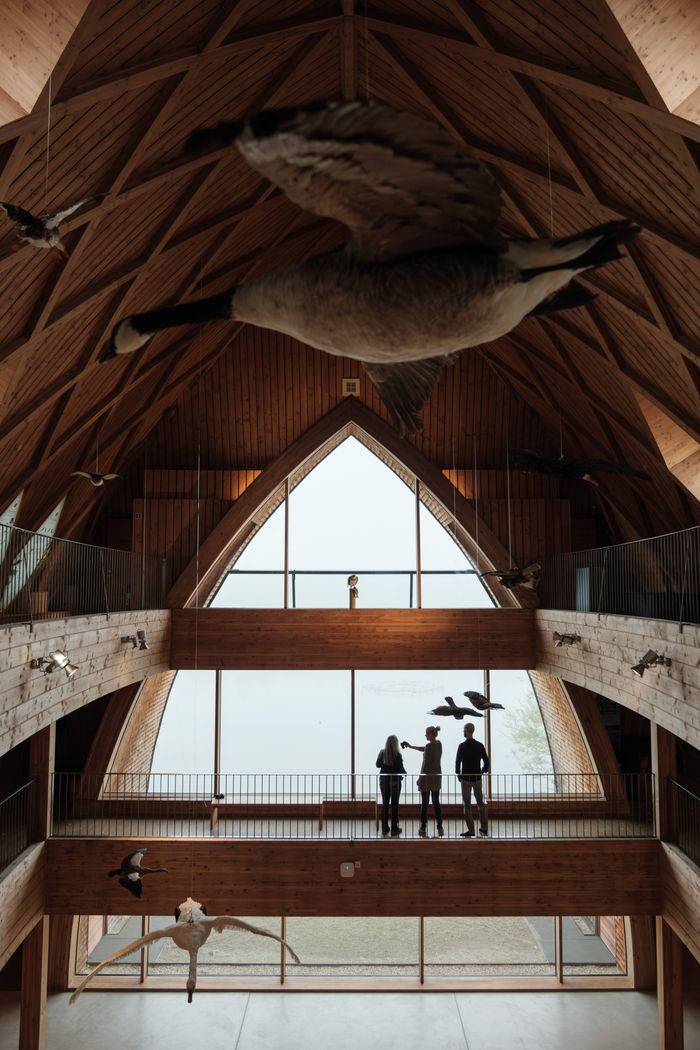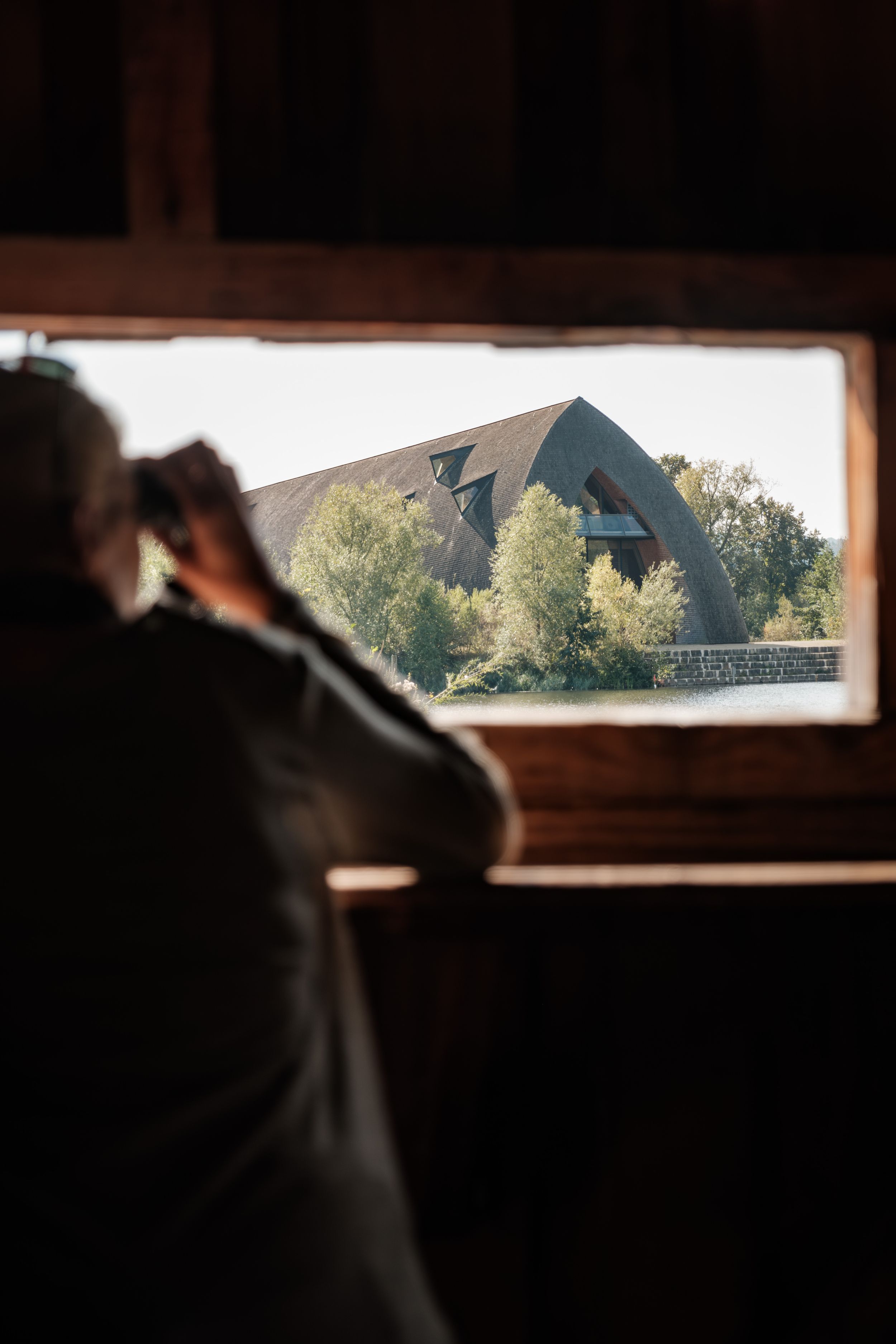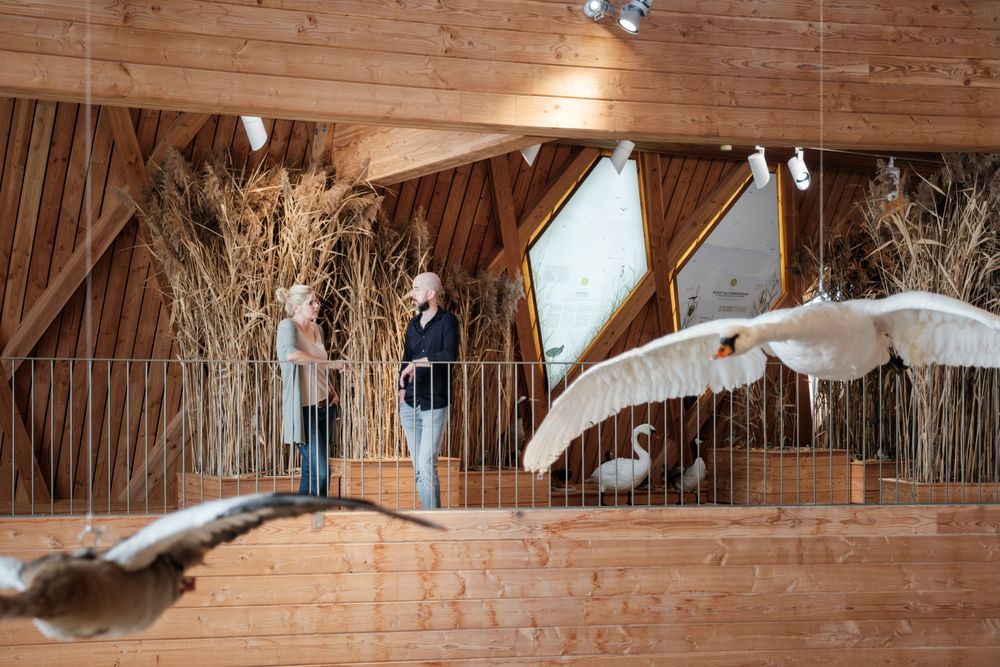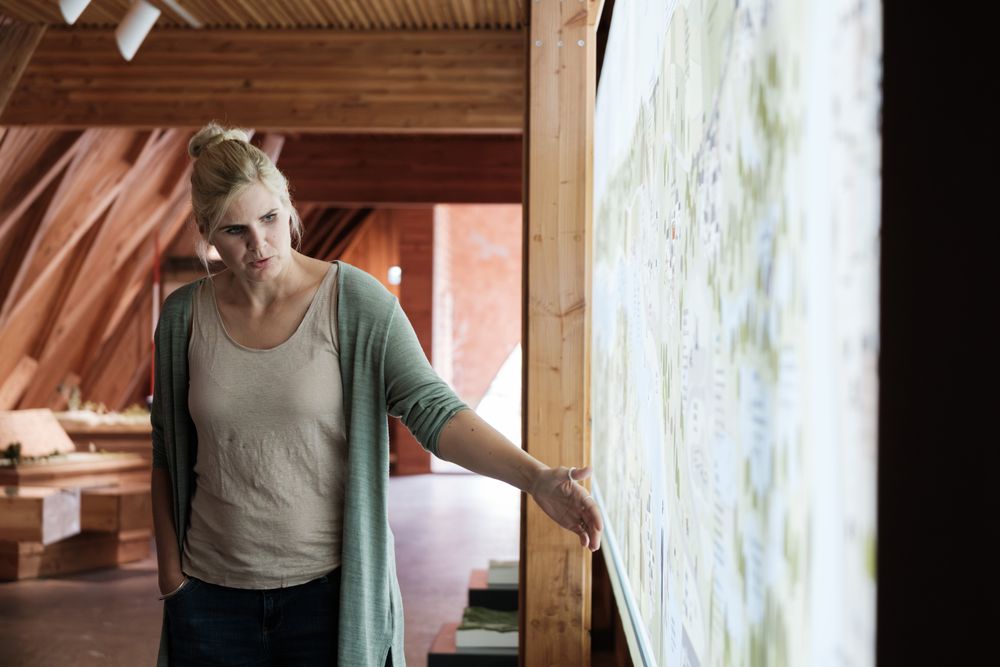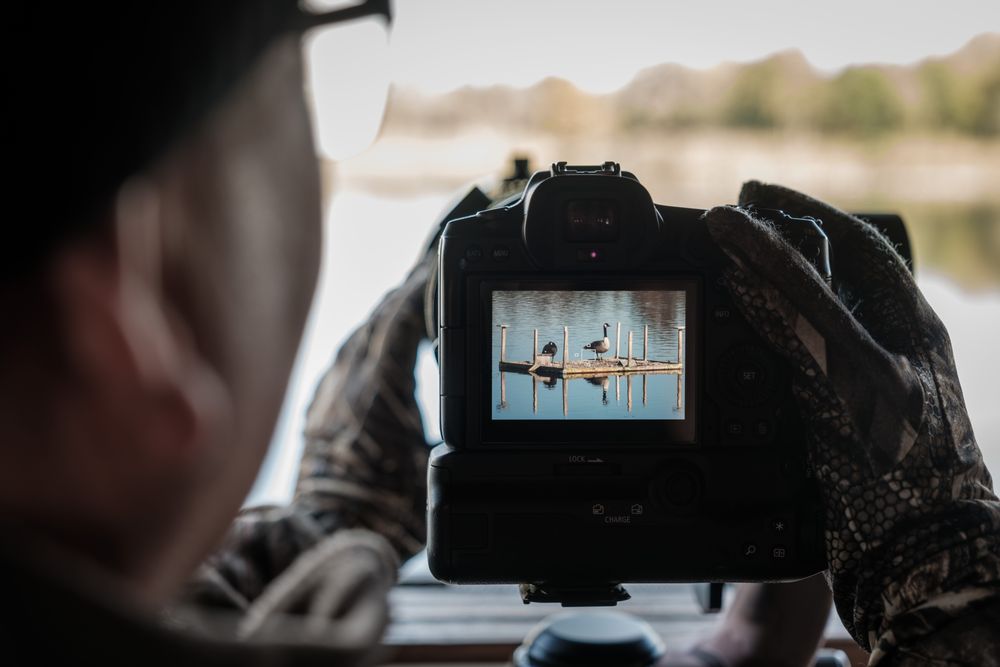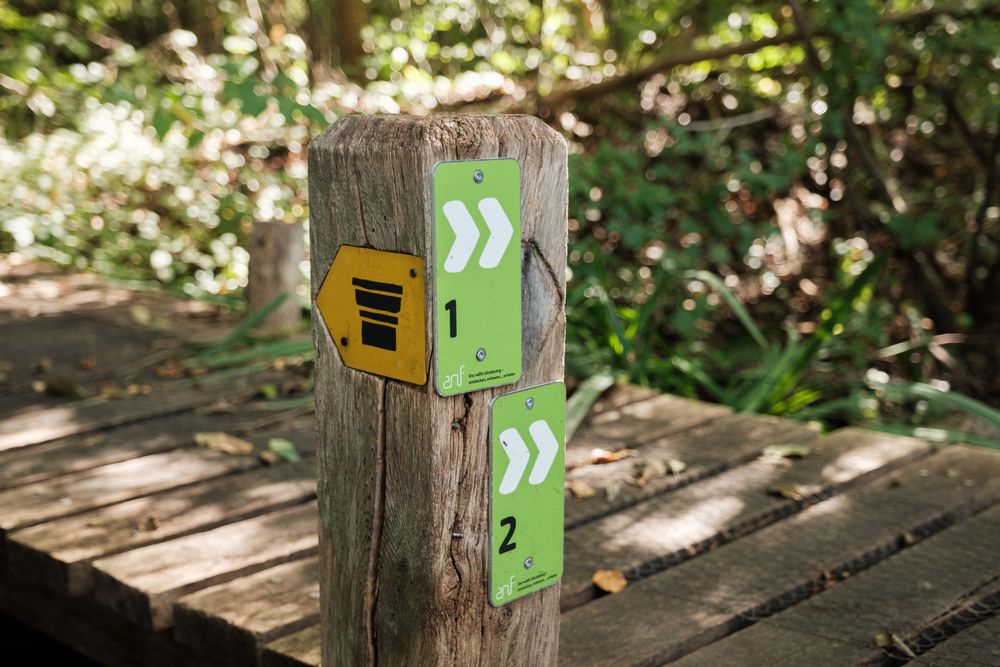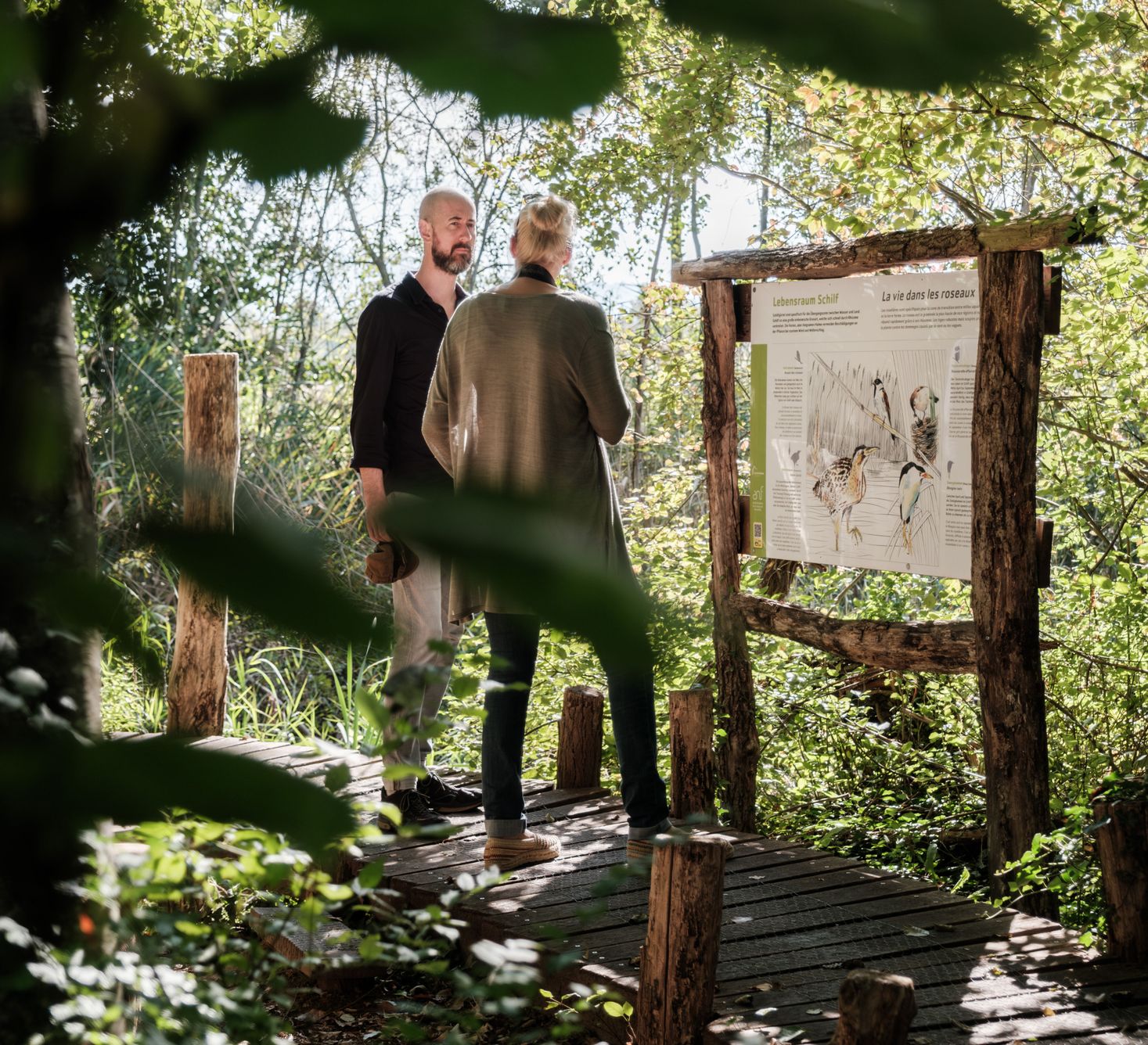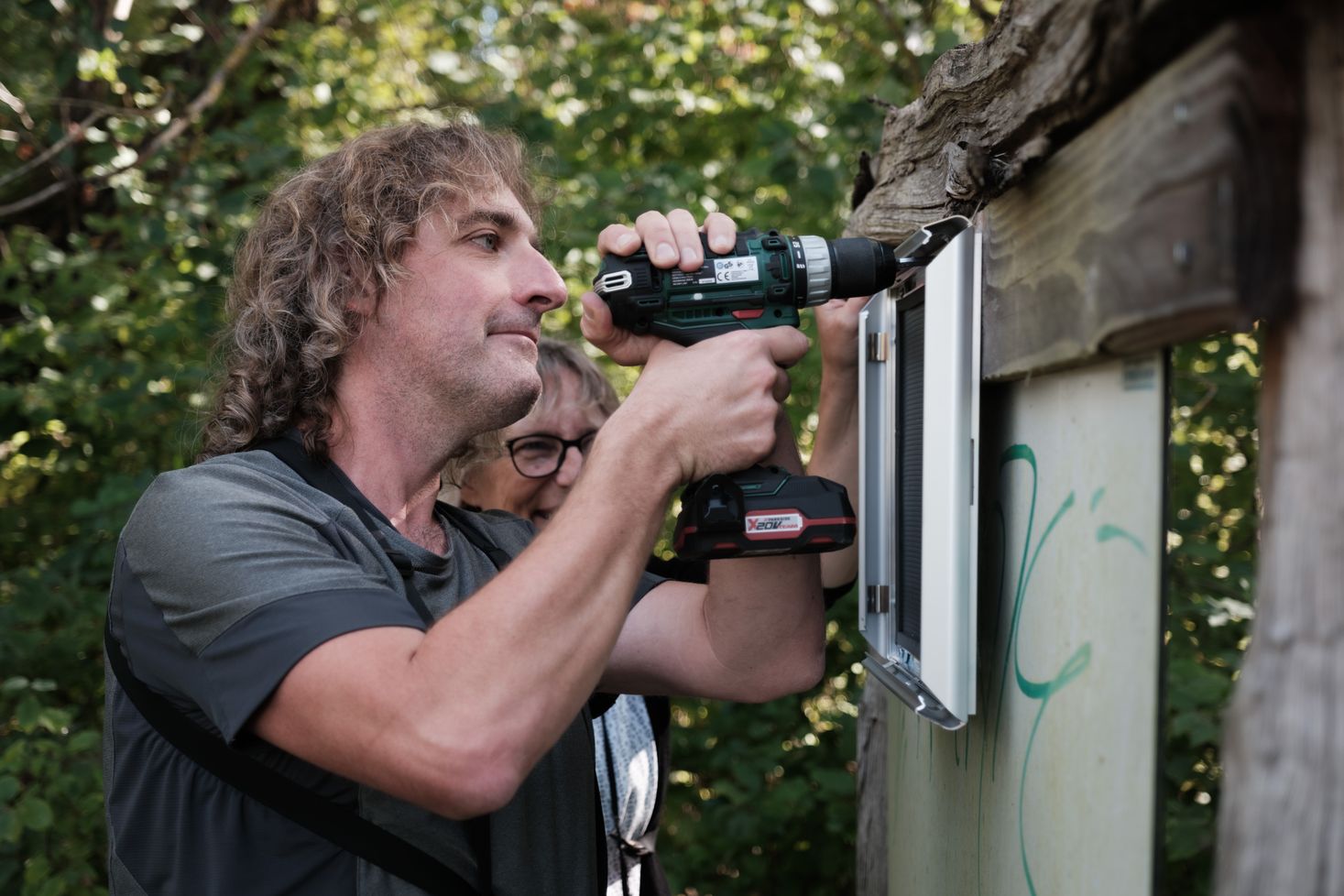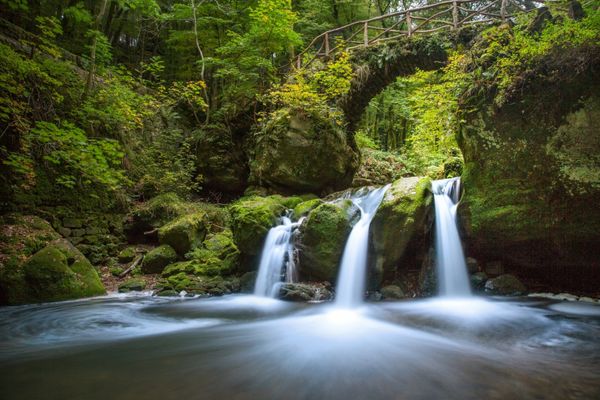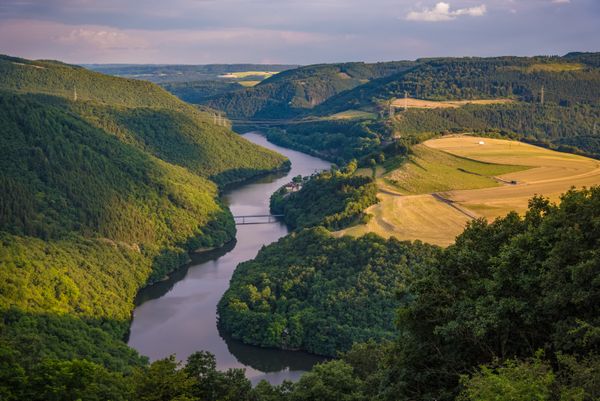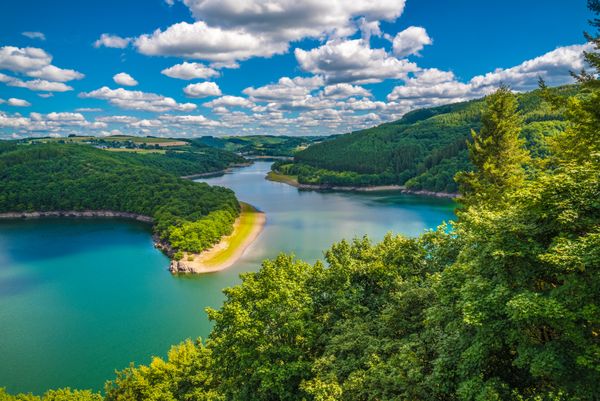Naturally passionate!
Visit the enchanting “Haff Réimech” nature reserve and its “Biodiversum” to connect with nature and learn about conservation. Enthusiastic staff share insights and guide tours.
In the beginning, there were animals. “I love animals!” says Kerstin Rose. The tall, blonde woman walks through the “Haff Réimech” nature reserve. Her gaze rests on the quiet pond. Suddenly, there’s flapping and three coots land on the water, creating ripples on the surface. They shriek three times. Then, silence.
Kerstin Rose is a guide who leads mostly young visitors through the reserve and “Biodiversum”. Step by step, literally, she introduces them to the world of conservation and sustainability.
